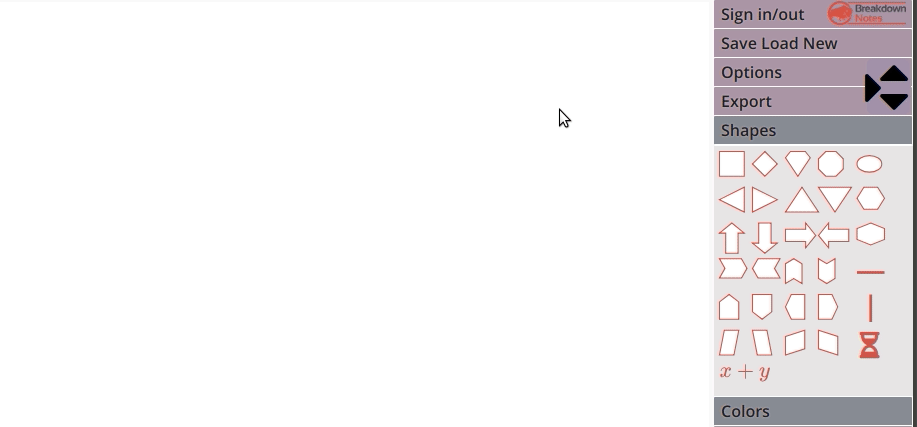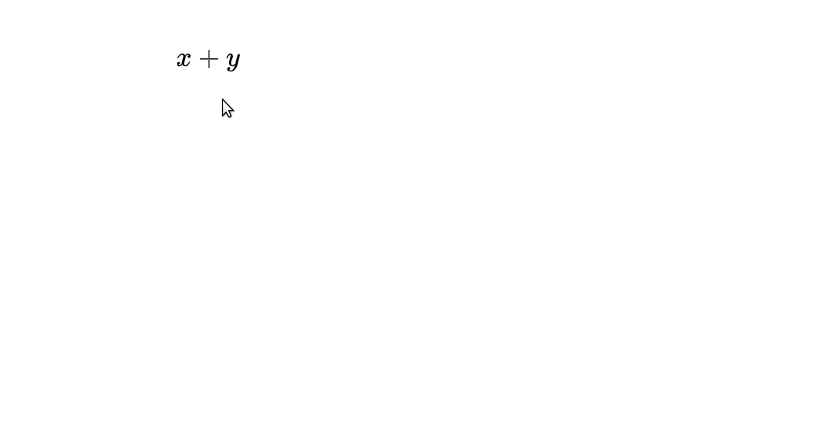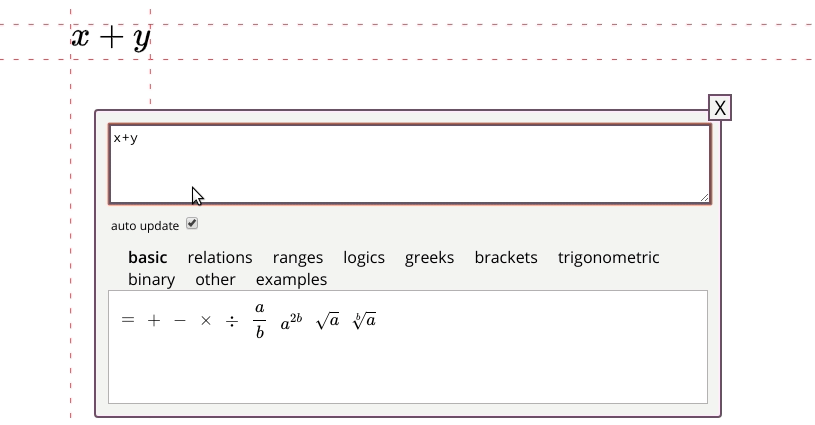Do you need to add some precise mathematical expressions to your notes ?
Or do you want to explain with words and arrows some complex formula, and then export it to embed in
your essay or report ?
Then keep reading. Because Breakdown Notes makes it rather simple to
add formula's with for instance greek letters, integrals or summations to your map and position these anywhere between the regular text, images
and arrows.
To write a mathematical expression, you will need to learn some Tex. Tex is a special notation which allows you to express math operators and symbols. And you will need to know how to add an expression with tex to the map.
To write a simple expression, like x + 2y, you do not need to use any special notation.
This works for all numbers and variables consisting of characters from the latin alphabet.
Just add a math shape to the map, double click it to open the input menu and type in the expression.

If you want to use a character that is not in the latin alphabet, like a greek letter delta or the "logical and" , you will need a keyword to describe the sign. The keywords needs to be preceded with a \ to signify that it is a tex expression. Some of the keywords you might guess, like \alpha, \beta etc. But to help out, Breakdown Notes has a menu from which you can simply click the desired character.

There are also Tex expression that cannot exist on their own. They need to be followed by some other expression,
variable or constant. For example a square root.
It is expressed as \sqrt x. In these cases, an error might occur if you
only type \sqrt without anything after it.
What if you want more then just one letter or number say the square root of (x+2)? To wrap x+2 under
the square root, you must use brackets {}. (where you would normally use () in your expression). Anything inside the brackets after the sqrt will
be wrapped inside the sqrt. The brackets will not show up in the final output.

Plenty of tex symbols need multiple other expressions, variables or constants. For instance a fraction.
A fraction is written as \frac x y. The first character after \frac will be the numerator, the second will be the
denominator. To put more on the denominator use \frac {x+2} {y-1}.
An error will appear if the tex parser cannot find two expressions.

with variables
Lots of variables need superscript or substript.
You can use _ (underscore) and ^ ( caret) after a letter, number or tex expression.
For instance, to write the power of something: 2^{x+1} , and
to write a Xi use x_i
Together with another tex expression
You can also use the sub- and superscript after certain tex expression, like an integral sign or Sigma.
It will then form part with the expression.
superscript x^{2\lambda} 
subscript y_1 + y_2 
both _a^b + \int_a_b 
As you might have notices, regular text inside tex expressions are written in italics. To write
text plain, you can wrap it with \mathrm{}
When writing tex, you might also notice that spaces/whitespaces disappear. To force tex to use whitespace, you can
write one of \, \: \; \quad which each add some amount of whitescape. They are listed here in increasing order.
If you want to wrap your expression between brackets, you should denote the brackets with \left and \right.
Tex will then choose a scale that fits the expression inside the brackets.
non italic text \mathrm{x} \ne x 
whitespace x y z \ne x \; y \; z 
sized brackets \left(\sum_{i=0}^n x_i \right) 
There are also some pretty hard expression syntax wise, like matrices. Best read the advanced docs if you want to use these. Or start from one of the examples. You can find plenty of examples here. Also on the tex input menu in Breakdown Notes you find some matrix examples plus others. Simply click these to add it to the tex shape on the map, and adapt it from there.
You can give the expression any color you want. Also, the characters in the expression can have a border. Right click an expression to access the context menu, or check out the border en colors field in the main menu.
You can also change the size of the expression. By right clicking an expression, a contextmenu will pop up. This contains a scale input. Simply change the scale to make your expression bigger or smaller.
Unfortunately, there are also some thing you cannot do...
© 2016-2019 - Breakdown-notes - All Rights Reserved - Terms of service - Privacy - Contact